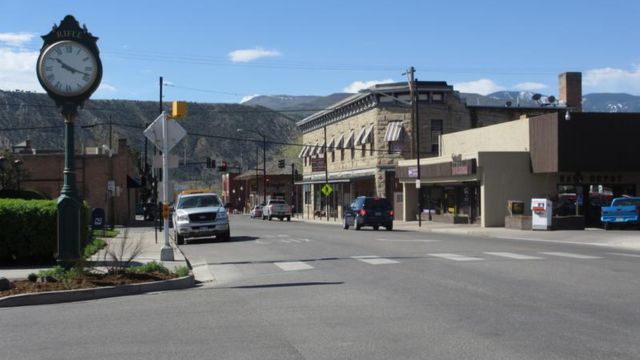Colorado stands out as a state brimming with natural beauty, outdoor activities, and cultural richness. Renowned for its high quality of life, robust economy, and low crime rates, the state does, however, grapple with mental health challenges, particularly in relation to depression. Depression, a prevalent and severe mood disorder, casts a shadow over individuals, inducing persistent sadness, loss of interest, hopelessness, and even suicidal thoughts.
A recent U.S. News & World Report reveals that Colorado ranks 38th among states for mental health, citing a high prevalence of depression and limited access to care. Furthermore, certain towns within Colorado exhibit varying levels of depression, contributing to disparities and stigmatization, with Rifle, according to a study by the University of Colorado Boulder, earning the designation as the most depressed city in the state.
Introducing Rifle:
Nestled in Garfield County along the Colorado River, approximately 60 miles west of Glenwood Springs, Rifle boasts a population of around 10,325, making it the 67th largest town in Colorado. Recognized for its historical significance, cultural vibrancy, and recreational offerings, Rifle also serves as a gateway to notable natural attractions such as the White River National Forest, the Flat Tops Wilderness Area, and Rifle Gap State Park.
Factors Contributing to Rifle’s Depression:
Rifle’s unfortunate distinction as the most depressed city in Colorado can be attributed to several factors:
- Economic and Social Challenges: Persistent issues like poverty, unemployment, homelessness, and crime create a stressful environment. Rifle’s poverty rate of 7% exceeds the state average, while the unemployment rate of 6.4% is also higher than the state average.
- Isolation and Limited Resources: The town grapples with isolation and a shortage of essential resources like healthcare, education, and transportation. With only one mental health provider per 1,000 residents, access to mental health services is below the state average.
- Environmental and Cultural Influences: Rifle’s cold, dry climate and high altitude contribute to challenges, potentially affecting mental well-being. Additionally, a cultural inclination toward self-reliance and individualism can hinder individuals from seeking help or expressing their emotions.
Consequences and Challenges of Depression in Rifle:
Depression in Rifle yields numerous negative impacts and challenges, including:
- Health Issues: Physical and mental health problems, ranging from fatigue and insomnia to anxiety and suicide. Rifle’s suicide rate of 25.8 deaths per 100,000 residents surpasses both the state and national averages.
- Economic and Social Ramifications: Lower productivity, increased costs, lower income, and diminished quality of life, impacting both individuals and the community.
- Legal and Ethical Concerns: Discrimination, harassment, and violations of rights, including low compliance with the Americans with Disabilities Act (ADA) in the workplace.
Addressing Depression in Rifle:
While there’s no quick fix, potential actions to address depression in Rifle include:
- Improving Economic and Social Conditions: Diversifying the economy, creating job opportunities, reducing poverty, and enhancing education.
- Increasing Mental Health Awareness and Access: Educating the population, training staff, expanding mental health networks, and reducing costs to improve access to services.
- Enhancing Environmental and Cultural Factors: Implementing support systems, activities, and interventions to improve overall well-being.
Conclusion:
Rifle’s escalating depression rates underscore the need for a multi-faceted approach. Addressing economic, social, health, and cultural factors is crucial not only for the town’s well-being but also for the broader Colorado community. Recognizing and understanding these issues is imperative to foster a healthier, safer, and more prosperous society.

